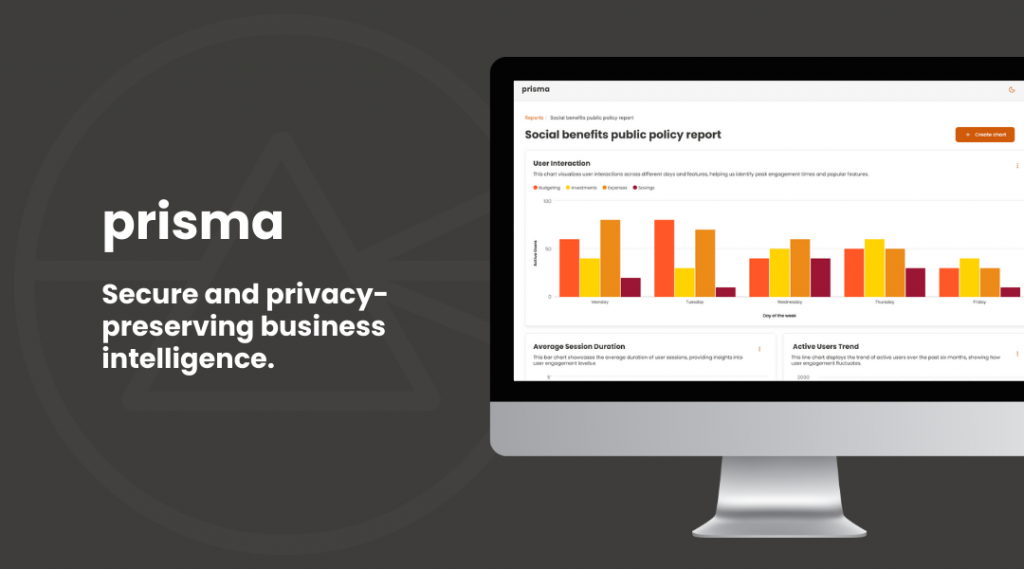A growing number of organizations seek to make better decisions supported by relevant data from which they can extract strategic, transformative, and profitable insights. At the same time, the more data is generated, processed, shared, and visualized, the greater the risks of security and privacy incidents such as data breaches and privacy violations.
In numerous discussions with representatives of organizations in various industries, I noticed an intriguing duality: entities in both private and public sectors, for and non-profit, will often choose either avoid using in-depth and strategic data altogether in a desperate attempt to prevent security and privacy issues or work with data without proper controls and safeguards, which commonly leads to a series of problems associated with improper data handling. In theory, it is unlikely that corporations and/or individuals would oppose the idea of being empowered by innovative solutions to protect confidential, personal, and sensitive data while harnessing its economic value.
In practice, from lengthy discussions with several technology adopters worldwide, abandoning the extremes of the duality above towards reconciling data utility with security and privacy requires a leap of faith.
Privacy-enhancing technologies (PETs) have emerged as a crucial framework to address these challenges, enabling businesses to maintain data security and privacy while allowing discernible and discrete economic benefits. While advocating for secure and privacy-preserving data-centric solutions, I observe that the unique benefits of a PET-based approach to data exploration are not always known or well-understood.
In this article, I will explore the strategy organizations can execute to leverage PETs and how it can lead to tangible economic advantages. The ideas discussed here are influenced by the work of Douglas B. Laney with Infonomics, and it aims to bridge that work with the vast universe of economic opportunities powered by PET-based solutions.
Enabling
Imagine what insights one could obtain if combining databases from public safety, public health, and social work. A few examples include an analysis of vulnerable populations and crime hotspots, health disparities in high-risk areas, the impact of social services on public safety, emergency response optimization, and the long-term outcome of interventions. Such insights have the potential to significantly optimize public projects and programs by reducing cost, increasing efficiency, reaching more beneficiaries, and facilitating new services. And yet, ongoing conversations with representatives of public institutions in the US, LATAM, and the EU reveal fear of compromising confidential, personal, and sensitive data, jeopardizing corporate governance, and violating applicable regulations. The potential is there, but it has often yet to be activated.
Enabling in this context refers to facilitating and empowering organizations to adopt and implement PET-based solutions for conquering desirable benefits while reducing the risks from the adverse incidents they justifiably fear. It involves creating a supportive environment with the tools, resources, and expertise to embrace PETs fully. Organizations can then navigate the complexities of data security and privacy by properly addressing barriers and challenges, such as legal and regulatory concerns, and they are supported with guidance on best practices and tools.
Discernible
Imagine a law firm cursed with the inefficacy of never-ending manual labor, an insurance agency drowning in a sea of spreadsheets, and a healthcare clinic stuck with physical archives and piles of paper. PET-based solutions can provide discernible economic benefits directly related to these struggles while properly addressing regulatory concerns that, many times, are keeping these organizations from improving their operations. For economic benefits to be discernible, they must be clear, perceivable, and distinguishable. In other words, organizations can observe and understand the financial gains, cost savings, productivity improvements, and competitive advantages that PETs can bring. Think of automation, integrated systems, distributed databases, and interoperable services, all of which are established with controls and safeguards that aim to satisfy recommendations and requirements from security and privacy standards and regulations. This clarity allows businesses to make informed decisions, evaluate the effectiveness of their security and privacy measures, and justify investments in privacy-enhancing technologies.
Discrete
When it comes to promoting a particular new technology, I often propose two questions to its evangelists:
- What are the problems that only this technology can solve?
- What problems can this technology solve better than any other alternative?
I have found that it is challenging to answer the first question as it is typically possible to address a problem in many ways. However, if there is an answer to the first question, that is undoubtedly the strongest argument one can make in favor of any technology. Nevertheless, the ability to answer the second question is also a powerful justification for adopting a new technology.
Regardless of answering the first, the second, or both questions, I propose that to be expressed as discrete economic benefits, which must be distinct in nature. Think of specific, recognizable, and irrefutable positive outcomes that, in addition, are not merged or blended with other factors. PET-based solutions can enable organizations to isolate and distinguish the value they generate from other variables influencing performance or outcomes. One critical example is computation on encrypted data, which provides levels of security and privacy for data in use that no other solution can possibly realize. Such capabilities empower businesses to measure and analyze the impact of PETs on their operations, processes, and performance indicators. Consequently, organizations can attribute and quantify the economic benefits derived from secure and privacy-preserving solutions.
Economic Benefits
Discussing the applicability of a new technology via real-world use cases is often the best way to advocate for its adoption. At the same time, identifying expected benefits that are industry-and-case-agnostic can also be a powerful mechanism for substantiating an adaptable, comprehensive, and transformative value proposition.
In this context, economic benefits encompass positive outcomes and advantages individuals, organizations, and society gain. They lead to increased revenue, cost savings, improved efficiency, protection and expansion of competitive advantages, enhanced productivity, and better resource allocation. With PET-based solutions, organizations can achieve:
- Measurable improvements in key performance indicators, including profitability, return on investment (ROI), market share, and customer satisfaction.
- Risk mitigation and compliance adherence, resulting in enhanced data security and privacy.
- Data monetization opportunities, enabling organizations to leverage critical and regulated data assets securely.
- Improved data-driven decision-making, as organizations can process and analyze data in a privacy-preserving manner.
- Streamlined collaboration across organizational or jurisdictional boundaries, protecting confidential, personal, and sensitive indicators.
Conclusion
Organizations embracing Privacy-Enhancing Technologies and adopting PET-based solutions can unlock a new realm of discernible and discrete economic benefits. By enabling the integration of PETs into their data practices, businesses can harness the full potential of confidential, personal, and sensitive data while ensuring security and privacy. These tangible economic advantages contribute to organizational success and foster societal progress and sustainable growth. As the awareness and performance capacity of PETs continues to accelerate, the breadth of commercial use cases will expand, revolutionizing how businesses leverage data assets securely and efficiently.



